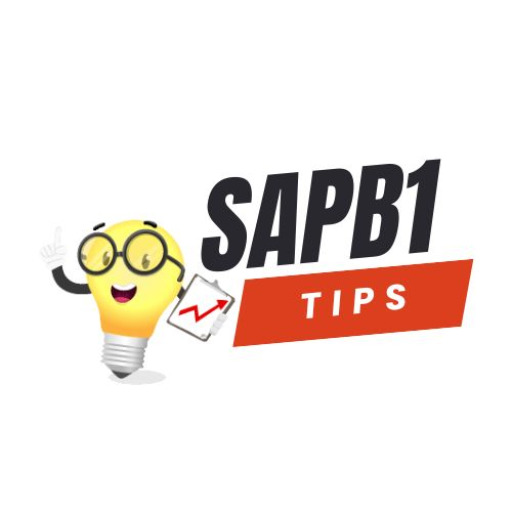GIS MAPPING - GPT-AI-powered GIS resource
AI-powered insights for GIS mastery
Can you define GIS Mapping and its primary purpose?
What basic software or tools are essential for someone starting in GIS Mapping?
Are there any simple platforms recommended for beginners to learn GIS Mapping?
How do GIS Maps contribute to environmental conservation efforts?
Analyze future trends in GIS Mapping technology and its potential societal impacts.
How does the integration of GIS into IoT devices reflect broader trends in smart city development?
How can GIS Mapping personalize user experiences in location-based services?
How can AI algorithms improve the accuracy of GIS-based environmental models?
What potential does AI hold for enhancing GIS Mapping in autonomous vehicle navigation?
How can professionals in urban planning stay updated with rapid advancements in GIS and AI technology?
What challenges arise in ensuring the real-time performance of GIS applications in emergency situations?
What barriers exist to implementing AI in the development of GIS Mapping solutions?
Related Tools
Load More
EarthGPT - Maps, Satellite Images, Geography
Explore planet earth using maps and satellite images right within ChatGPT.

GIS Pro
Your go-to GIS wizard that supports and empowers professionals and enthusiasts.
ChatGIS
Experto en GIS, PostgreSQL, PostGIS, programación y cartografía

GIS Expert
GIS Expert for ArcGIS, PostgreSQL, Python advice
QGISGPT
The original (unofficial) multi-purpose AI assistant for QGIS users

GeoGPT
A scholarly geography resource with extensive knowledge from books and papers.
20.0 / 5 (200 votes)
Introduction to GIS MAPPING - GPT
GIS MAPPING - GPT is designed to be a leading AI resource in Geographic Information Systems (GIS), offering comprehensive knowledge and the latest developments in the field. Its primary function is to assist users in aspects such as data storage, management, analysis, and visualization, as well as exploring the transformative impact of AI in these areas. GIS MAPPING - GPT serves a diverse audience, including urban planners, environmental scientists, GIS analysts, and students. The platform aims to provide educational guides, tutorials on GIS fundamentals, and case studies across various sectors. It also features interactive elements like Q&A, expert insights, a resource library, and a community forum. For example, an urban planner can use the platform to understand the impact of new infrastructure projects on traffic patterns, while an environmental scientist might use it to analyze changes in land use over time.

Main Functions of GIS MAPPING - GPT
Educational Guides and Tutorials
Example
A step-by-step tutorial on how to use GIS software for beginners.
Scenario
A student new to GIS can follow a detailed guide on how to import data, perform spatial analysis, and create maps, helping them build foundational skills.
Data Management and Analysis
Example
Techniques for managing large datasets and performing spatial queries.
Scenario
An environmental scientist managing climate data can learn best practices for organizing and analyzing their datasets to track changes in temperature and precipitation patterns over time.
AI Integration in GIS
Example
Applying machine learning models to predict urban growth.
Scenario
A city planner can use AI tools provided by GIS MAPPING - GPT to forecast urban expansion, helping in making informed decisions about zoning and infrastructure development.
Ideal Users of GIS MAPPING - GPT
Urban Planners
Urban planners can use GIS MAPPING - GPT to analyze spatial data, evaluate the impact of infrastructure projects, and plan for sustainable city growth. The platform's tools help them visualize traffic patterns, population density, and land use changes, making it easier to create effective urban plans.
Environmental Scientists
Environmental scientists benefit from GIS MAPPING - GPT by accessing advanced tools for analyzing ecological data, monitoring environmental changes, and assessing the impact of human activities on natural habitats. The platform's resources enable them to conduct thorough spatial analyses and create detailed environmental reports.
GIS Analysts
GIS analysts can leverage the comprehensive data management and analysis functions of GIS MAPPING - GPT to enhance their workflows. The platform offers advanced techniques for spatial data manipulation, helping analysts generate more accurate and insightful results for their projects.
Students and Educators
Students and educators can utilize GIS MAPPING - GPT as a learning and teaching tool. The educational guides and tutorials make it easier for students to grasp GIS concepts, while educators can use the platform to develop curriculum and instructional materials.

How to Use GIS MAPPING - GPT
Step 1
Visit aichatonline.org for a free trial without login, also no need for ChatGPT Plus.
Step 2
Familiarize yourself with the interface. Explore the main dashboard to understand available features like Q&A, expert insights, and resource library.
Step 3
Start with educational guides or tutorials on GIS fundamentals. These resources are designed to help beginners get up to speed quickly.
Step 4
Utilize the interactive features such as Q&A and community forums to ask specific questions and engage with other users.
Step 5
Explore advanced features like AI integration case studies and application scenarios to enhance your knowledge and application of GIS technologies.
Try other advanced and practical GPTs
Vector Image Maker
AI-powered vector graphics generation made easy.

Argument Amplifier Bot - CE 101
AI-powered editing for stronger arguments

Fakemon Generator V2
Create Unique Fakemon with AI

SEC Filings
AI-powered SEC filings made simple.

Newsletter Writer GPT
AI-driven newsletter creation made easy.

SAP B1 Tips
AI-powered SAP Business One mastery

記事を画像で要約
AI-powered article summaries in 4 panels

U
AI-Powered Custom Content and Insights

DELL-A
Transforming Images with AI Power

Your girlfriend Tiffany ✅
AI-powered Emotional and Relationship Support
【就活/転職】志望動機作成サポートGPT
AI-powered tool for personalized motivation statements.

Apache Camel Assistant
AI-Powered Apache Camel Expertise.

- Data Visualization
- AI Integration
- Educational Resources
- Urban Planning
- Environmental Analysis
GIS MAPPING - GPT: Frequently Asked Questions
What is GIS MAPPING - GPT?
GIS MAPPING - GPT is an AI-powered resource platform designed to provide comprehensive knowledge and the latest developments in Geographic Information Systems (GIS). It covers aspects such as data storage, management, analysis, visualization, and AI integration in GIS.
Who can benefit from using GIS MAPPING - GPT?
The platform is ideal for urban planners, environmental scientists, GIS analysts, and students. It offers educational guides, tutorials, expert insights, and case studies that cater to a wide range of professionals and enthusiasts in the GIS field.
How does GIS MAPPING - GPT support learning and development?
GIS MAPPING - GPT provides a variety of educational content, including guides, tutorials, and workshops. It also offers industry insights, networking opportunities, job listings, and a marketplace for GIS and AI-related tools and services.
Can I use GIS MAPPING - GPT for real-world applications?
Yes, the platform includes application case studies across various sectors, showcasing how GIS and AI can be applied to solve real-world problems. It also offers tools and resources to implement these solutions in your projects.
What kind of interactive features does GIS MAPPING - GPT offer?
GIS MAPPING - GPT includes interactive features like Q&A sessions, community forums, and expert insights. These features enable users to ask specific questions, engage with other users, and gain valuable knowledge from industry experts.